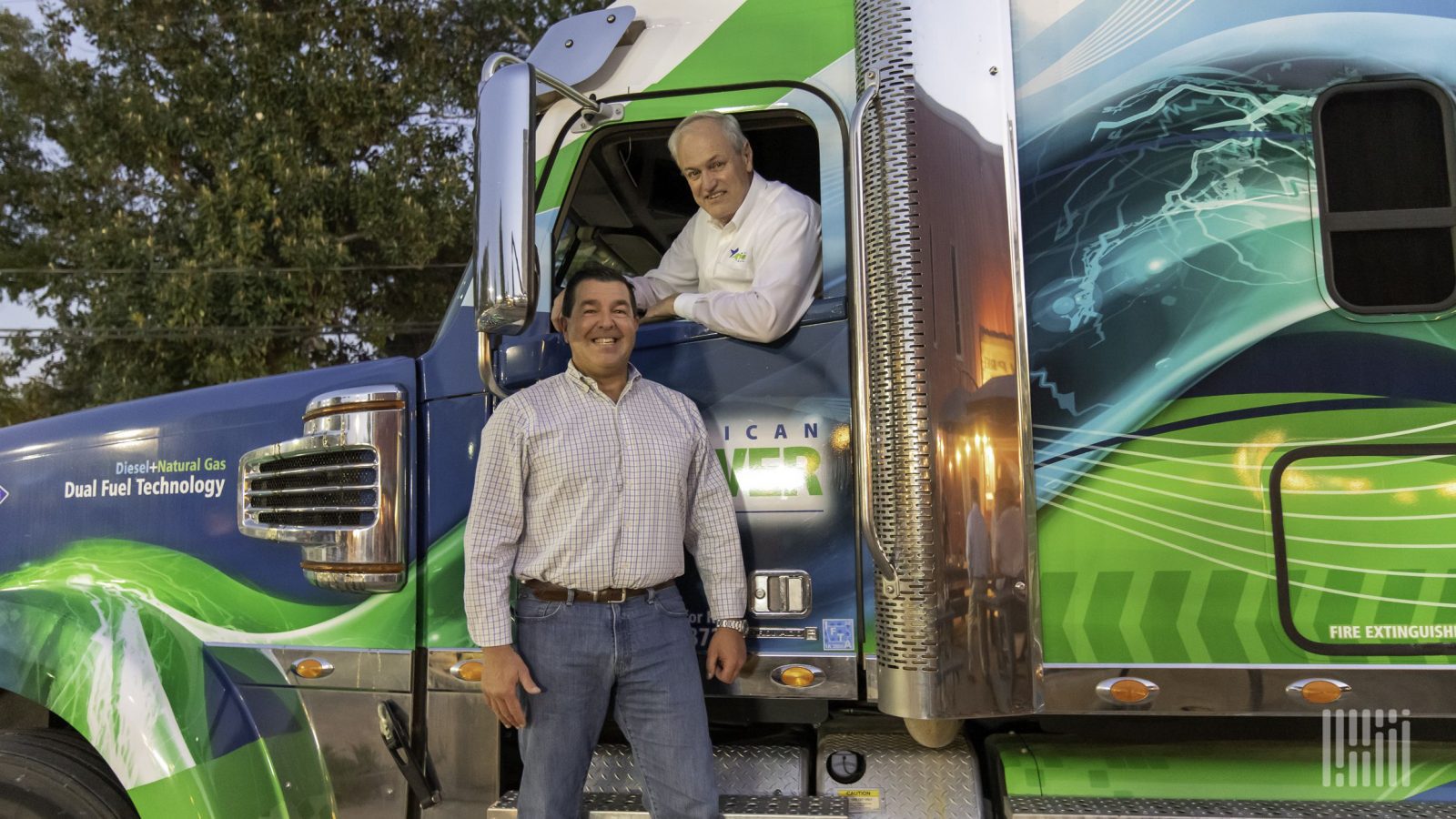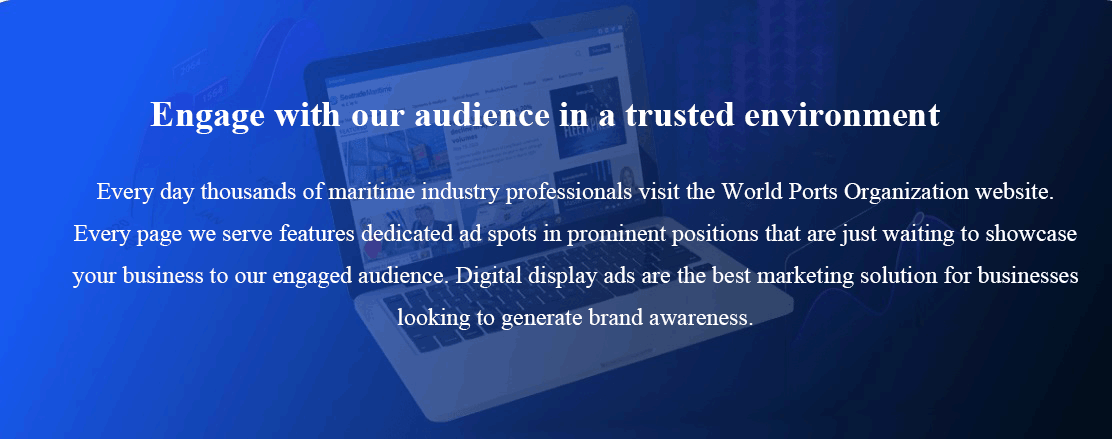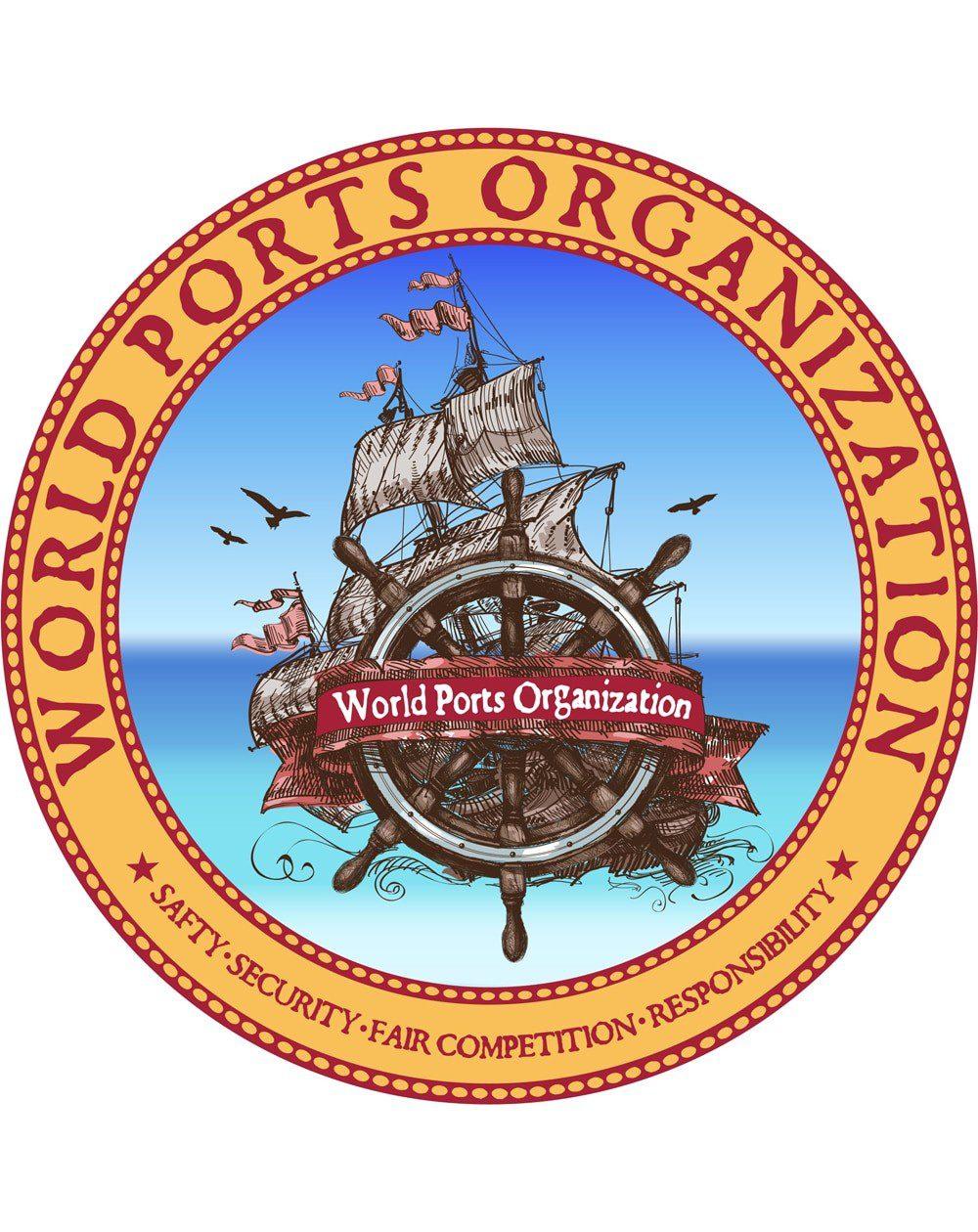With diesel prices at all-time highs, the American Power Group Inc. is hoping its dual-fuel approach to heavy-duty trucking results in greater interest among owner-operators and small fleets.
The $25,000 retrofit substitutes one of two diesel tanks on a Class 8 tractor with natural gas and uses software to make the two fuels work together, saving money at the pump and reducing emissions.
“Our pitch is bigger bang for your buck,” Chuck Coppa, APG president, CEO and chief financial officer, told . “You can spend a quarter of a million on one dedicated natural gas truck or you can convert 10 of the systems that you’ve already spent a hundred grand plus for.”
American Power Group truck is not a hybrid
APG’s patented V6000 Dual Fuel System is not a hybrid. Nor is it a glider in which older engine technology is disguised by a new truck body. It is a niche product in an industry in which zero tailpipe emissions from battery-electric trucks and true zero-emission hydrogen-powered fuel cells are sexier and attract more attention.
The lack of electric infrastructure opens the door wider for APG.
“We think we have a 20-year run here,” said Lyle Jensen, business development adviser to APG’s board and former president and CEO. “I think diesel’s here for a hell of a lot longer than people want it to be.”
Based on the age of the converted engine, APG puts up some impressive numbers:
Add a 25% to 30% reduction in diesel use and APG would seem to have a compelling case for fleets that cannot afford new equipment.
Algona, Iowa-based APG’s first demo truck is a 2015 Freightliner CC132 Coronado sleeper cab. A Detroit Diesel DD15 engine puts out 505 horsepower and 1,850 pound-feet of torque.
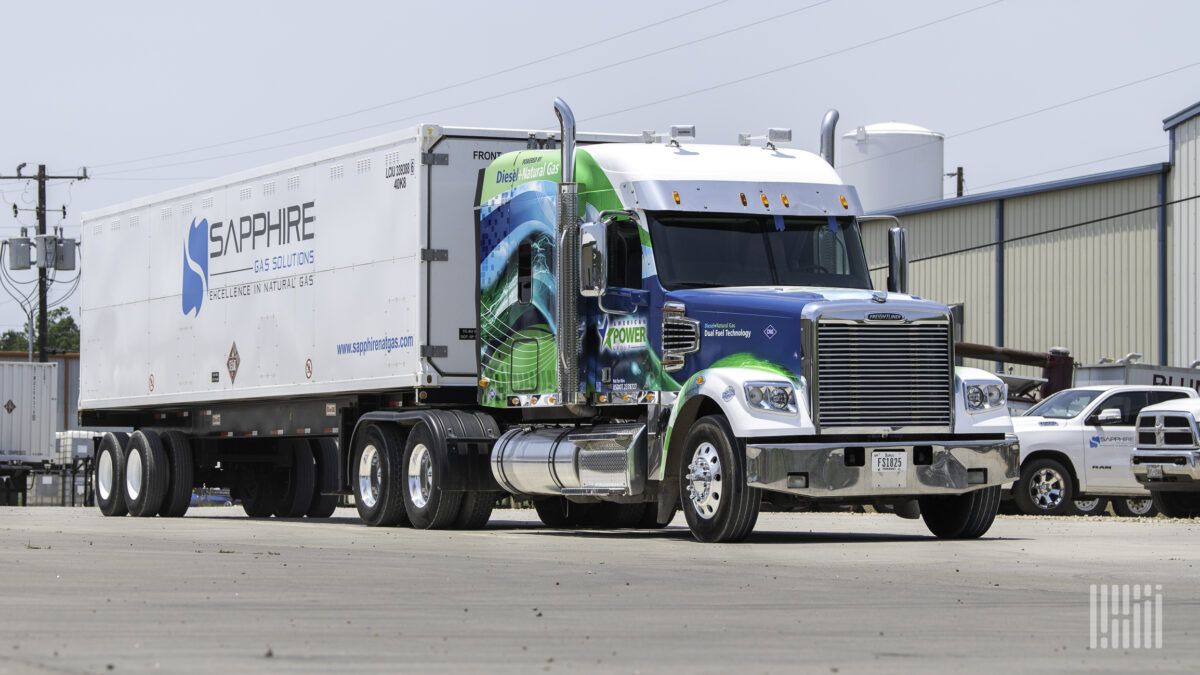 Sapphire Gas Solutions tested the American Power Group’s dual fuel prototype and said it saved 25% to 30% on fuel costs. (Photo: Jim / )
Sapphire Gas Solutions tested the American Power Group’s dual fuel prototype and said it saved 25% to 30% on fuel costs. (Photo: Jim / )
How the American Power Group system works
The EPA bans conversions of diesel engines for the first 24 months of life. So, APG concentrates on the used engine market. First- and second-generation owners are its target.
APG created a digital design to safely introduce 2% to 3% natural gas into the air induction system before the turbocharger spins up — in essence turbocharging air already going to the engine. The spinning air reaches the compression chamber to create higher energy at the point of combustion.
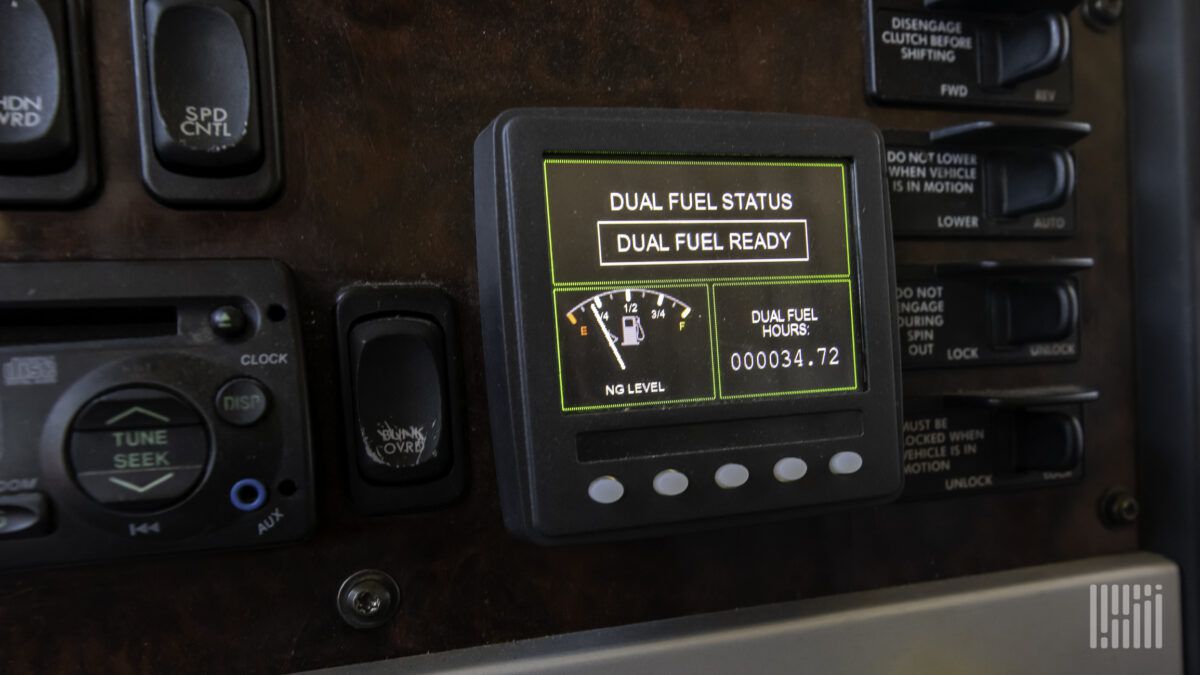 A dashboard monitor shows the status of American Power Group’s dual fuel system. (Photo: Jim / )
A dashboard monitor shows the status of American Power Group’s dual fuel system. (Photo: Jim / )
The selling point is that the system keeps the power of 100% diesel while using about half as much. Dedicated natural gas systems are less powerful because natural gas provides less power. One tradeoff is 10% to 20% fewer emissions.
“It’s a read-only system and it’s not invasive,” Jensen said. “We can take the tank and the system off and reflash our computer to the next certified or approved OEM engine.”
‘Really tough task’
“It is really, really hard to actually do a system that does both diesel and natural gas just because of the number of components that we have to have for the different fuel systems,” Puneet Jhawar, general manager of Cummins’ natural gas business, told . “It’s a really, really tough task.”
APG acknowledges its development work is harder due to the growing complexity of truck engines governed by multicontroller area network message-based protocols designed to allow electronic control units to reliably communicate with each other based on priority.
“There are tens of thousands of signals that we have to monitor to be sure that we’re compliant,” Jensen said.
The V6000 avoids creating problems for the diesel engine. In fact, APG trains and certifies diesel technicians at larger customers to install the system.
“There’s been virtually no maintenance to this thing because it’s basically regulators and an ECM [engine control module],” Jensen said. “Post-installation service is practically nothing. You’re still spending most of your [technician’s] time maintaining a diesel engine.”
In terms of warranty, the diesel engine maker is responsible for its product. The company doing the conversion is on the hook for any damage to the diesel engine because of dual fuel technology, APG writes all its contracts that way. Warranties are for one year with an optional second year.
Something to prove
Jensen led APG for eight sometimes difficult years. He handed off the CEO title to Coppa in 2017. As CFO, Coppa signed the Securities and Exchange Commission Form 15 delisting APG in September 2018. Today, the company trades as a penny stock. Its most recent price was 2.75 cents a share.
“We think we have to earn the right to be considered as an alternative fuel for the existing diesel fleets,” Jensen said. “We quickly learned that we were not going to be an OEM new truck manufacturer. But we felt we had a huge opportunity to take existing diesel engines and come up with an alternative fuel solution.”
Perpetual market
Laboratory and road testing is complete on APG’s next-generation V6000 system.
“The technology’s been running for 10-plus years, so it’s not a science experiment,” Coppa said. “The streets are littered with people who tried to do this and failed horrifically. We’ve spent a great deal of time on the stationary side of the business, and that’s really been our bread and butter over the last 12 years, in the oil and gas arena predominantly.”
Power stations and other installations are one thing. But an addressable market of 2 million engines with selective catalyst reduction (SCR) makes a tempting business case.
“We’ve got 2 million SCR engines running around out there that are 2012 and newer,” Jensen said. “Every single year another 200,000 SCR diesel trucks go to the market. All I have to do is go out and get those engine models tested and certified. And I have a perpetual source of raw engines.”
Showing off the dual fuel goods
“Heavy haul is the primary path: the oil tanker oil and gas industry in Oklahoma and Texas,” Jensen said. “That’s the next place we’re going because of hauling the sand, the oil, the gas.”
Another appealing market is the dairy industry both for the tanker and feed industries and because dairy animal waste is a main source of RNG.
“Because of dairy RNG, we’ve got the second-cleanest decarbonation fuel of anybody,” he said.
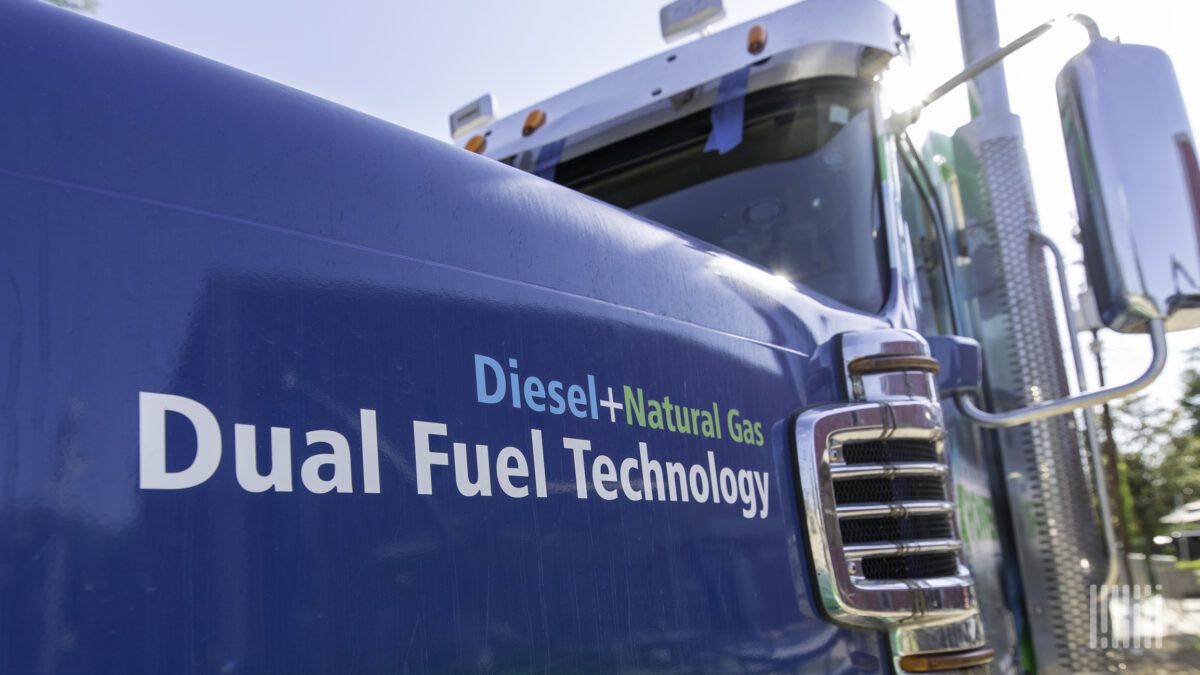 Making diesel and natural gas coexist is the secret to the America Power Group’s dual fuel technology. (Photo: Jim / )
Making diesel and natural gas coexist is the secret to the America Power Group’s dual fuel technology. (Photo: Jim / )
Bottom line: Is there room for APG among solutions to save fuel and reduce emissions? Other technologies like NOx-reducing cylinder deactivation and two-stroke engines with opposed pistons are dots on the technology map.
“Many solutions are emerging that will challenge our industry’s ability to design, test and implement proven and cost-effective solutions, whether in production or retrofitted,” said Mike Roeth, executive director of the North American Council for Freight Efficiency. “We call the next decade a real ‘messy middle’ with great opportunities, but challenges.”

